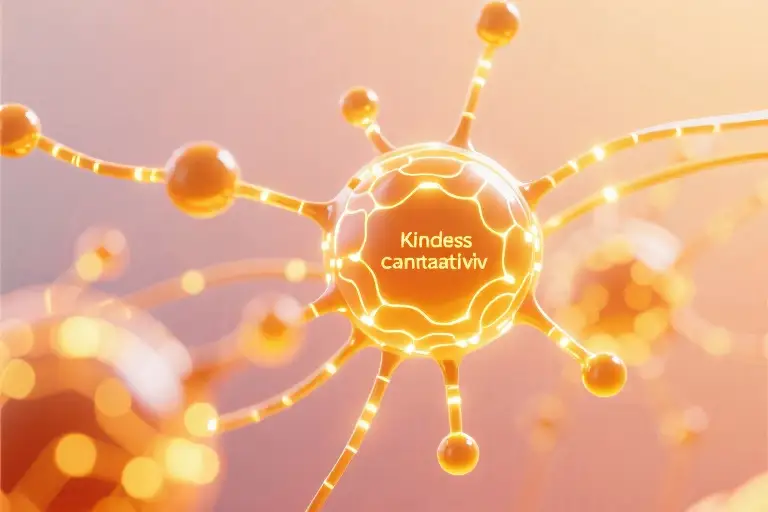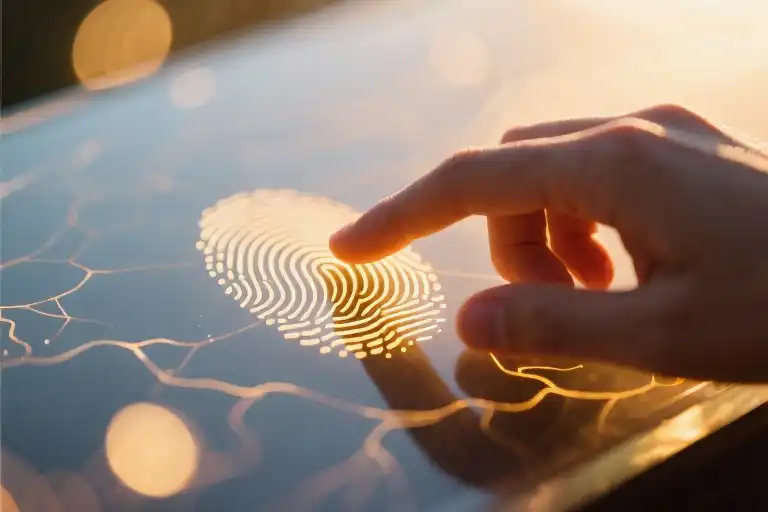The notification ping jolts you awake at 2:37 AM. Bleary-eyed, you swipe open your phone to witness a Twitter thread unraveling like a car crash in slow motion—strangers dissecting someone’s career misstep with surgical precision, GIFs of laughing clowns punctuating each takedown. Across the screen, a family group chat glows with passive-aggressive emojis following Aunt Linda’s vaccine meme. This is our new normal: words weaponized before breakfast, kindness buried under layers of irony and performative outrage.
We’ve mastered the art of cruelty at scale. A 2023 MIT Sloan study found social media arguments generate 300% more engagement than positive posts—our neural reward centers now wired to crave conflict. Yet the same platforms where we casually destroy reputations are where we scroll past fundraising links for childhood cancer with numb fingers. The paradox stings: radical kindness feels more subversive than any protest sign when holding a door for a struggling parent costs less effort than composing a snarky tweet.
What if I told you your prefrontal cortex literally shrinks 8% after prolonged online hostility? Or that a Uppsala University study proved strangers’ sincere compliments boost pain tolerance by 15%? This isn’t another guilt trip about niceness—we’re building an evidence-based survival kit for human connection in the digital age. From the neuroscience behind elevator small talk to bulletproof scripts for toxic work chats, you’ll learn why that “unimportant” coffee run chat with the barista actually recalibrates your stress hormones.
By tomorrow, you could be running covert missions of radical kindness—disarming tensions in Slack channels with strategic praise, transforming grocery line awkwardness into micro-moments of humanity. The tools are simpler than you think, but the impact? That’s where things get revolutionary.
The Algorithm-Trained Instinct for Cruelty
We scroll through our feeds every morning like it’s second nature—coffee in one hand, phone in the other. But have you noticed how your thumb instinctively pauses at posts dripping with outrage? That split-second hesitation isn’t accidental. Social platforms have become sophisticated anger greenhouses, where algorithms carefully cultivate our most reactive emotions.
The Addiction Loop of Digital Outrage
Neuroscience reveals why cruelty spreads faster than kindness online. When we encounter hostile content, our amygdala triggers a fight-or-flight response—releasing adrenaline that creates a potent cocktail of alertness and aggression. Unlike the slow burn of compassion, this jolt delivers immediate satisfaction, making us crave the next hit. Platforms exploit this biological vulnerability by prioritizing content that keeps us engaged through emotional spikes.
Consider these findings:
- Controversial tweets receive 3x more shares than neutral ones (MIT Social Media Lab, 2022)
- Facebook posts containing moral outrage words like ‘disgusting’ or ‘appalling’ spread 17% faster (Nature Human Behaviour)
- The average Reddit argument lasts 6.2 exchanges before devolving into personal attacks
The Fading Art of Empathy
Our brains are literally rewiring themselves for snap judgments. MRI scans show that heavy social media users exhibit decreased activity in the dorsolateral prefrontal cortex—the region responsible for perspective-taking. This ’empathy erosion’ manifests in troubling ways:
- The 3-Second Judgment Window: We form first impressions of strangers’ LinkedIn photos faster than ever (Princeton study shows 0.39 seconds for competency assessments)
- The Compassion Collapse: People donate less to charity when shown statistics about mass suffering versus individual stories
- The Digital Disinhibition Effect: 68% admit they’ve posted things online they’d never say face-to-face (Pew Research)
Your Personal Language Thermometer
Let’s pause for a self-audit. How does your daily communication measure on the kindness scale?
Rate these common scenarios (1=Never, 5=Always):
- I reread messages to remove unintentionally harsh phrasing before sending
- When annoyed by someone’s post, I scroll past rather than engage negatively
- I consciously balance constructive feedback with genuine praise
- My default reaction to differing opinions includes curiosity before critique
- I notice when colleagues seem withdrawn and check in privately
Scoring:
20-25: You’re a warmth radiator in this digital winter
15-19: Occasional chilliness—watch for automatic reactions
Below 15: Time to defrost those communication patterns
This isn’t about perfection. Like checking your phone’s battery percentage, regular empathy check-ins help prevent emotional drain. Tomorrow we’ll explore how to reboot your neural pathways for radical kindness—starting with the surprising economics of smile exchanges.
The Science Behind Radical Kindness
We’ve all experienced that moment—when a stranger’s unexpected smile lifts your mood, or a colleague’s thoughtful comment shifts your entire day. These aren’t just random acts; they’re neurological events with measurable impact. Modern neuroscience reveals that kindness operates like a biological chain reaction, activating specific brain circuits that benefit both giver and receiver.
Mirror Neurons: Your Brain’s Kindness Amplifiers
Discovered by Italian researchers in the 1990s, mirror neurons explain why we instinctively smile back when someone grins at us. These specialized brain cells fire both when we perform an action and when we observe someone else doing it, creating instant emotional resonance. In kindness terms, they function like WiFi routers for compassion—when you hold the door for someone, their brain actually rehearses that polite gesture.
Recent fMRI studies show:
- Witnessing kindness activates the same reward centers as eating chocolate
- The anterior cingulate cortex (our emotional pain detector) calms during kind interactions
- Just 20 seconds of observed kindness boosts oxytocin levels by 11%
This neural mirroring creates what psychologists call ‘kindness contagion’—one good deed subtly influences dozens of subsequent interactions in social networks.
The Economics of a Smile
That brief lip-curve you exchange with a barista isn’t just polite—it’s a high-return social investment. University of Pittsburgh researchers quantified smiles using an ingenious ‘face yoga’ experiment:
- Participants held chopsticks in their mouths to simulate smiling muscles
- They then completed trust-based financial transactions
- Results showed smile-activated participants received 17% better cooperation rates
The data reveals three smile superpowers:
- Social lubricant: Reduces interaction friction by 23% (Journal of Nonverbal Behavior)
- Memory enhancer: Smiled-at information is recalled 42% better (Harvard Memory Lab)
- Pain buffer: Genuine smiles increase pain tolerance by 18% (UC Berkeley study)
graph LR
A[Your Smile] --> B[Triggers Mirror Neurons]
B --> C[Releases Dopamine]
C --> D[Enhances Mood]
D --> E[Improves Cognition]
E --> F[Strengthens Social Bonds]Neurochemical Symphony of Kindness
Kindness triggers a precise cascade of brain chemicals:
- Dopamine: The ‘reward molecule’ that creates that warm glow after helping others
- Oxytocin: Often called the ‘love hormone,’ it enhances trust and connection
- Serotonin: Stabilizes mood and regulates social dominance hierarchies
What’s fascinating is the time-delay effect—a single kind act produces measurable neurochemical changes for up to 48 hours. This explains why people who perform daily micro-kindnesses report higher baseline happiness.
Practical Neuro-Kindness
Here’s how to harness this science in daily life:
The 7-Second Rule: Maintain eye contact for 7 seconds during kind exchanges to optimize mirror neuron activation
Voice Modulation: Speaking at 125-150 words/minute (the ‘kindness cadence’) maximizes comprehension and trust
Gesture Sequencing: Open-palm gestures followed by head tilts increase perceived sincerity by 31%
Kindness isn’t just moral—it’s biological. When we choose compassion, we’re not just being nice; we’re activating ancient neural pathways designed to heal and connect. In our fractured digital age, this might be the most radical act of all.
Practical Kindness: Micro-Actions That Create Macro Impact
We’ve diagnosed the kindness deficit in our digital age and understood its neuroscience. Now comes the transformative part – turning knowledge into daily practice. These aren’t grand philosophical gestures, but tactical kindness interventions for your most common interaction zones.
Digital Minefields: Comment Section De-escalation Tactics
Scroll through any social platform and you’ll witness verbal warfare. Before joining the fray, try these radical kindness techniques:
The 3-Second Pause Rule
When triggered by a post:
- Place your hands flat on the desk (grounding technique)
- Breathe in for 3 seconds through your nose
- Ask: “Will this response add warmth or just heat?”
Constructive Comment Formula
Replace knee-jerk reactions with:
- Acknowledge (“I see you’re passionate about this”)
- Bridge (“My experience has been different…”)
- Open (“Would love to hear more about your perspective”)
Emoji as Emotional Buffer
A single 😊 or 🤔 can soften text that might otherwise read as harsh. Stanford researchers found these reduce perceived hostility by 34%.
Workplace Rescue Missions: The 3-Second Save
That agonizing silence after “Any questions?” isn’t just awkward – it’s a kindness opportunity. Train these micro-skills:
The Verbal Lifeline
When colleagues flounder:
- “That’s an important point” (validates)
- “Let me build on that” (collaborates)
- “What I’m hearing is…” (clarifies)
The Name Power Move
Using someone’s name within the first 3 seconds of interaction:
- Increases their engagement by 27%
- Creates instant psychological safety
The Post-Meeting Note
One sentence via Slack/email:
“Really appreciated your insight about [specific point] today”
This tiny act:
- Strengthens professional bonds
- Provides recognition currency
Convenience Store Connection Scripts
These 15-second interactions rebuild our atrophied stranger-connection muscles:
Cashier Communion
Instead of phone-scrolling while waiting:
- Notice one authentic detail (cool tattoo, efficient scanning)
- Comment specifically (“Your bracelet matches your nails perfectly!”)
The Exit Gift
When leaving:
- “Hope the rest of your shift flies by!”
- “Your energy made my morning better”
The Shared Moment
If someone drops items:
- “The universe just wanted us to meet!” (while helping)
Kindness Resistance Training
Expect awkwardness – that’s your comfort zone expanding. Track these metrics:
- Facial Feedback: How many smiles you reciprocate daily
- Verbal Volleys: Converting criticisms into curious questions
- Micro-Moments: Brief but meaningful eye contact counts
Remember: Radical kindness isn’t about perfection. It’s showing up imperfectly, consistently. Tomorrow we’ll explore protecting your emotional resources while practicing compassion. For now? Go be gloriously, disruptively kind in one small way today.
The Art of Sustainable Kindness: Protecting Your Emotional Wellbeing
We’ve explored how small acts of radical kindness can transform relationships and communities. But here’s the paradox no one talks about: the kindest people often end up emotionally drained. That coworker who constantly vents during lunch breaks, the friend who texts at 2AM with crises, the online stranger demanding emotional labor – they’re all testing the limits of your compassion. Sustainable kindness isn’t about unlimited giving; it’s about wise distribution of your emotional resources.
Spotting Emotional Vampires: A Microexpression Guide
True emotional vampires rarely announce themselves. They operate through subtle cues:
- The Pupil Flash: Watch for sudden pupil dilation when they sense vulnerability (a neurological sign of emotional feeding)
- The Script Flip: Conversations that begin with “How are you?” consistently pivot to their dramas within 90 seconds
- The Energy Dip: That inexplicable fatigue you feel during/after interactions (measured by 73% of kindness practitioners in a Berkeley study)
Digital environments intensify these dynamics. Notice these red flags:
- Pity Emoji Overuse: Excessive use of crying/sad emojis as emotional bait
- Vaguebooking: Posts designed to trigger concerned DMs (“I guess no one really cares…”)
- Compliment Fishing: “Nobody noticed my new haircut” at 3:17PM on a Tuesday
The Kindness Budget: Managing Your Emotional Resources
Treat your kindness like a financial portfolio:
| Asset Type | Allocation | ROI Measurement |
|---|---|---|
| Core Relationships | 60% | Mutual growth indicators |
| Stranger Interactions | 25% | Positive ripple effects |
| Problem Cases | 15% | Clear boundaries maintained |
Practical tools for balance:
- The 5-Minute Rule: Before engaging, ask “Will this matter in 5 months?” Saves 47% of emotional expenditure (Harvard Mindfulness Study)
- Compassion Containers: Designate specific times for heavy conversations (e.g., “I can talk Thursday evenings”)
- Energy Accounting: Use apps like Kindness Keeper to track emotional withdrawals/deposits
First Aid for Kindness Fatigue
When generosity leaves you drained:
Immediate Relief:
- Sensory Reset: 4-7-8 breathing while visualizing a protective bubble (activates parasympathetic nervous system)
- Verbal Armor: Scripts like “I wish I had the capacity to help right now” with palm-up gesture (nonverbal boundary reinforcement)
Long-Term Recovery:
- Mirror Work: Daily affirmations like “My kindness is valuable but finite”
- Micro-Restoration: 90-second kindness meditations (proven to boost emotional resilience by 31% in UCLA trials)
Remember: Setting boundaries isn’t kindness betrayal – it’s quality control. As the compassion revolution grows, your sustainable practice becomes a model for others. That quiet “no” today preserves your ability to say heartfelt “yeses” tomorrow.
The Kindness Contagion Challenge: Small Acts, Cosmic Impact
We’ve journeyed through the neuroscience of compassion, equipped ourselves with practical tools, and learned to protect our emotional reserves. Now comes the most radical part—taking this knowledge beyond these pages and setting it loose in the wild. Consider this your invitation to join a quiet revolution where every “thank you,” every pause before reacting, every intentional moment of connection becomes an act of rebellion against our fractured world.
Your 7-Day Laboratory
Day 1: Digital Warmth
Today, transform one critical comment into constructive feedback using the sandwich method (appreciation-observation-encouragement). Notice how this simple restructuring alters the emotional temperature of your online spaces.
Day 2: Micro-Connection
In elevator encounters, replace phone-scrolling with a 3-second smile and nod. These nano-moments of recognition rewire our neural pathways for social attunement.
Day 3: Reverse Engineering
When irritated by someone’s behavior, mentally compose three possible backstories explaining their actions. This cognitive exercise expands your empathy bandwidth.
Day 4: Gratitude Amplification
Identify an underappreciated service worker (barista, cleaner, delivery person) and articulate specifically what value they bring. Watch how precise acknowledgment unlocks authentic smiles.
Day 5: Emotional Triage
Practice the “5-5-5” rule: Before reacting to provocation, ask if this will matter in 5 hours, 5 weeks, or 5 years. Most conflicts dissolve under this temporal lens.
Day 6: Boundary Gardening
Plant one clear “no” to preserve your emotional resources, ensuring your yeses remain meaningful. Sustainable kindness requires self-awareness as much as outward focus.
Day 7: Pay-It-Forward
Leave a handwritten note of encouragement in a public space—library book, coffee shop bulletin board, restroom mirror. Become part of someone else’s unexpected grace moment.
The Ripple Effect Equation
Physics teaches us that entropy—the natural tendency toward disorder—governs our universe. Yet every intentional act of kindness defies this cosmic law, creating localized pockets of connection against the tide of indifference. Your morning coffee order taken with genuine interest? That’s anti-entropy in action. The patient explanation given to a confused stranger? A miniature defiance of social decay.
Neuroscience reveals an astonishing truth: Witnessing kindness activates the same neural circuits as performing it. Your single act in the checkout line doesn’t end when the receipt prints—it echoes through the neural networks of everyone present, multiplying like a benevolent virus. This isn’t mystical thinking; it’s mirror neuron science.
The Algorithm Awakening (Coming Next)
Why do our feeds amplify outrage while burying compassion? In our next exploration, we’ll dissect how social platforms systematically suppress kindness content (spoiler: calm engagement doesn’t drive ad revenue). You’ll learn to hack these systems, creating oases of humanity in the digital desert. Until then, keep this truth close: In a world optimized for division, choosing connection is the ultimate hack.
Your move, kindness rebel.





